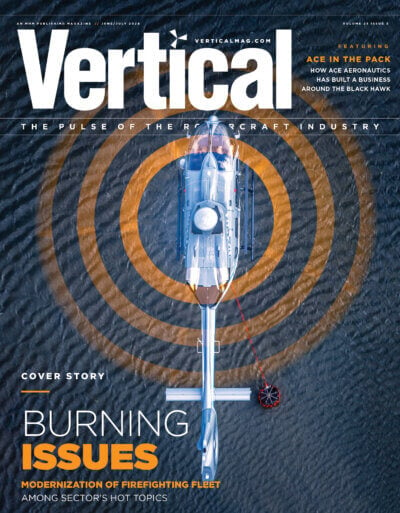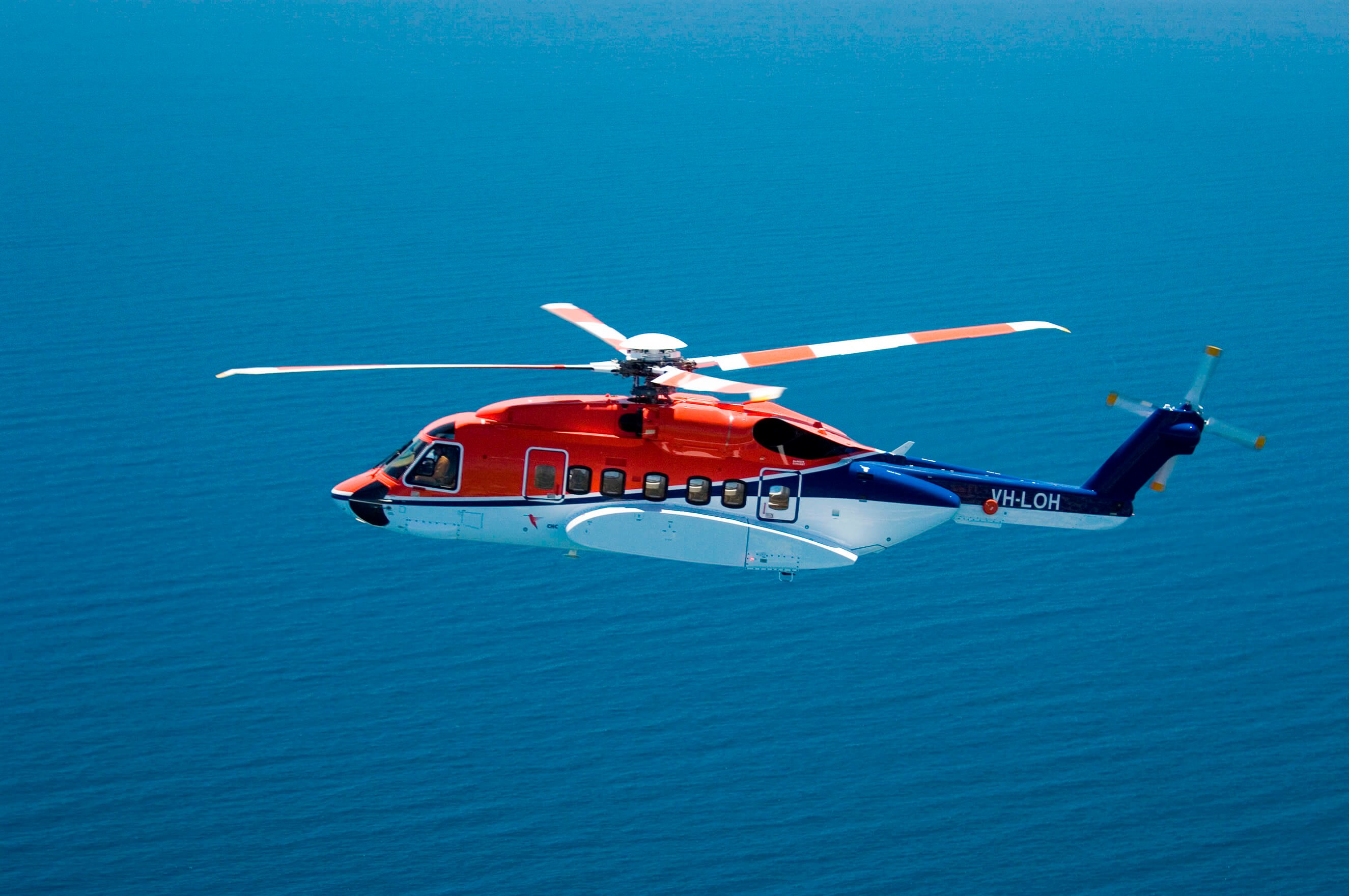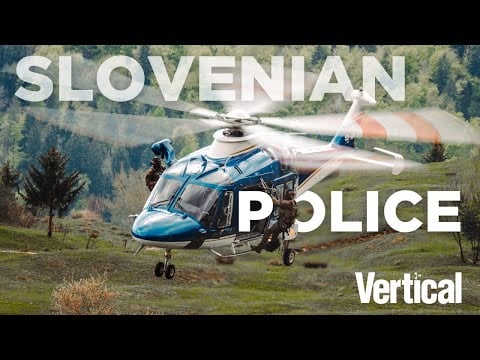Energy companies have a “lack of confidence” in the supply chain supporting the Sikorsky S-92 as availability rates continue to drop, Tony Cramp, Shell Aircraft’s vice president, aircraft, told attendees at the Helicopter Investor conference in London.
“The availability is dropping — 85 percent and heading south at the moment — and that’s not good enough for the availability that we need,” said Cramp, speaking during a panel on the customer view of the offshore market.
“When you see those sort of availability [figures] — and that’s off available aircraft — the supply chain managers feel the pain. You don’t need that many flights offshore cancelled and workers stuck offshore for them to be talking about better reliability.”
Cramp’s comments came the day after Leon Silva, vice president of global commercial and military systems for Lockheed Martin, launched an impassioned defense of Sikorsky’s commitment to the S-92 — and the commercial market in general — following widespread assumptions to the contrary.
“We’re not projecting the need to exit the market,” said Silva. “We think we have a strong presence, it’s a strong business for us. When you’re part of the business and you’re making great contributions to the outside numbers, it tends to be sustainable. There’s absolutely no forecast [to exit]. I certainly think that it will be many many decades during which we will remain involved in the civil helicopter [business].”
Close to 240 S-92s are in service around the world in various roles. Comparatively, there are 130 Airbus H225s in operation, over 80 Leonardo AW189s, and almost 60 Airbus H175s — and all three of those are working through substantial order books.
Silva said that “there is room for other types” offshore, but that any widescale replacement of the S-92 fleet is still some way off.
“We have obviously a projection for retirement of the S-92 fleet over time, [but] I think it’s a lot less aggressive than most other people,” he said. “The aircraft has performed very well for the customers that have been operating it for years [and] experience matters.”
Addressing the supply chain challenges that have been dogging the S-92 — and the wider aerospace industry — in recent times, Silva said the long lead time of certain parts meant it has been difficult to react to rapidly changing demand from the offshore sector.
“If I showed you some data, for example, from right before Covid [and] right after Covid — including the guidance from our big operators as to where they thought it was going to head and I actually listened entirely to them — we would actually be in a worst case than we are right now, because the information tends to change very quickly,” he said.
Cramp said it was “interesting listening to the sort of robust feelings” around the S-92. “I’m not sure that’s shared more generally in the customer community at the moment,” he said. “There is a lack of confidence there — primarily around supply chain issues, and the perceived lack of buy-in by Lockheed to further developing that product.”
Cramp compared this with the various technology benefits offered in the latest generation of aircraft, including various safety features, the design of gearboxes, and the simplification and lower cost of maintenance of those types.
“As we move forward with contracting, then I wonder how competitive [older generation aircraft] are going to be, because for the vast majority of our contracts and operations, it’s not just two heavies and then some super mediums — they’re all competing for the same [work],” he said. “There are very few operations that we have that can’t be done by a super medium.”
Cramp also spoke of the difference in cost between super mediums like the Airbus H175 and the Leonardo AW189, versus the S-92 — and even the yet-to-be-certified Bell 525 Relentless.
“If you’re talking about the cost of [S-92]A+s or if you talk about the cost for the 525, they’re massively different from the other two super mediums,” he said. “And when you’re looking as a logistics manager [for an energy company], how do you make the case? You can possibly have three super mediums for the price of two of the heavies, with all the other benefits that come along with it.”
Nigel Leishman, chief commercial officer at LCI, said the pricing dynamic has changed recently, making super mediums even more competitive with the S-92.
“Up until a few years ago, new helicopter pricing versus older S-92 pricing was challenging to make the case work,” he said. “The dynamic has now changed — but I still believe there’s definitely going to be a place for the 92 in this market for a long period of time.”
He said this was because there are still parts of the world where the S-92 “works and works very well.”
“It’s a workhorse, passengers like it, and as long as it can continue to be operated and supported safely, it’s going to be an important part of that of that market,” he said.
A return to offshore for the H225?
Perhaps one of the more notable statements made during the Helicopter Investor event was Cramp revealing that the H225 Super Puma “will probably go back onto [Shell’s] approved list shortly,” following improvements made to the type by Airbus over the last few years.
The H225 was the S-92’s only competition in the heavy offshore role, but largely disappeared from that sector following the crash of a CHC-operated H225 near Turoy, Norway, in 2016. It has subsequently begun a hugely successful second life in the utility sector, but Airbus has maintained that the type could still have a role to play in the offshore industry, and has been working hard to publicize the technology and safety enhancements it has made in the aircraft.
Cramp said he was part of a delegation that visited Airbus Helicopters’ headquarters in Marignane, France, at the end of last year to discuss the changes the manufacturer has made to the H225.
“[I was] super impressed with what the Airbus engineers have done with the gearbox and addressing all of the issues really that came out of the Turoy accident,” he said. “They’ve done a fantastic job there.”
However, while the type may return to Shell’s approved list, Cramp said it doesn’t mean it will be contracting for it directly.
“It just becomes an aircraft that we can use or can be used if we need to, depending on circumstances that change with the industry.”
His comments came a day before the Unite union revealed that 75 percent of respondents of a survey of 1,200 offshore workers said they would never fly in a Super Puma again. In the same survey, 17 percent of respondents said safety concerns — including the recent crash of a Bristow search-and-rescue S-92 off the coast of Norway — had “really shaken” confidence in the S-92, while 43 percent was concerned about the impact of supply chain issues on helicopter safety.









